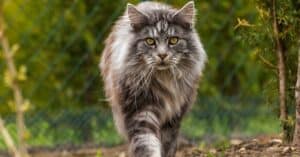These cats are playful and loving with dog-like personalities. They can’t get enough of their humans! They have different coat colors, with some more common than others. Discover Burmese cat colors: rarest to most common!
Burmese Cat Colors: Rarest to Most Common
Chocolate
The rarest coat color for Burmese cats is chocolate. This is a dark brown color that’s richer than sable and may sometimes appear as if completely black. The noses and paw pads of chocolate Burmese cats may be either chocolate brown, matching their coats, or more of a cinnamon color.
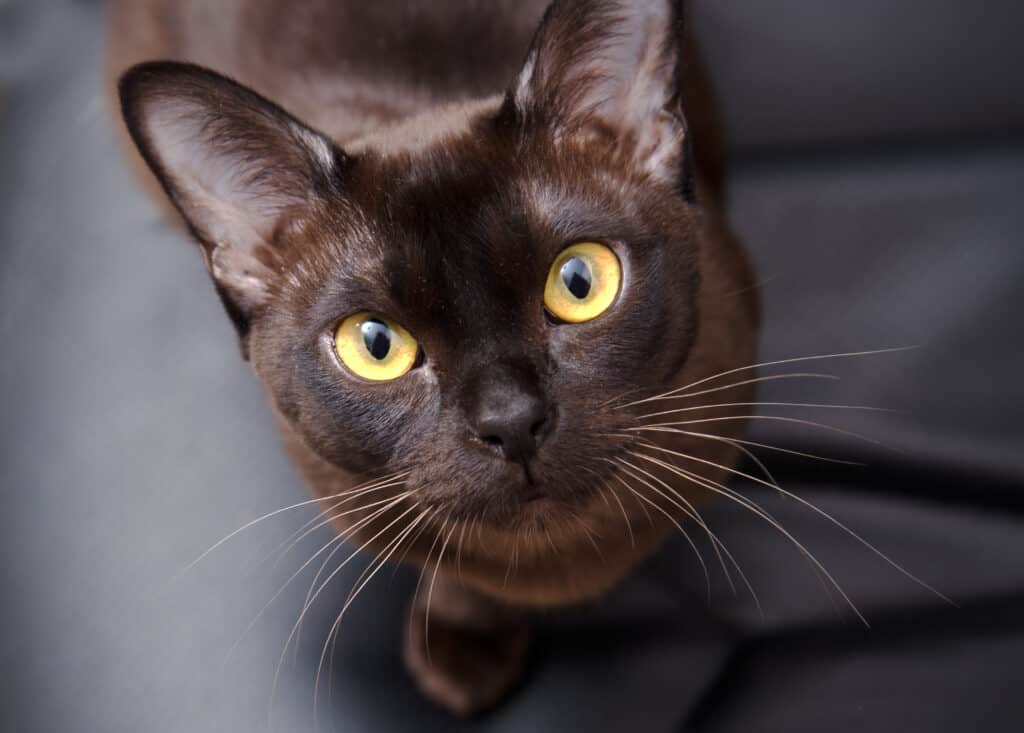
Chocolate is the rarest coat color for Burmese cats.
©woff/Shutterstock.com
Cream
Cream is the second-rarest coat color of Burmese cats. These cats have a creamy, light-colored, pale coat. They are the lightest beige, and their noses and paw pads are pink.

Cream is the second-rarest coat color for Burmese cats.
©snowturtle/Shutterstock.com
Red
The red in Burmese cats is more of a reddish-orange. This vibrant color is rarer than sable, champagne, blue, platinum, and lilac. Red Burmese cats have pink noses and paw pads.
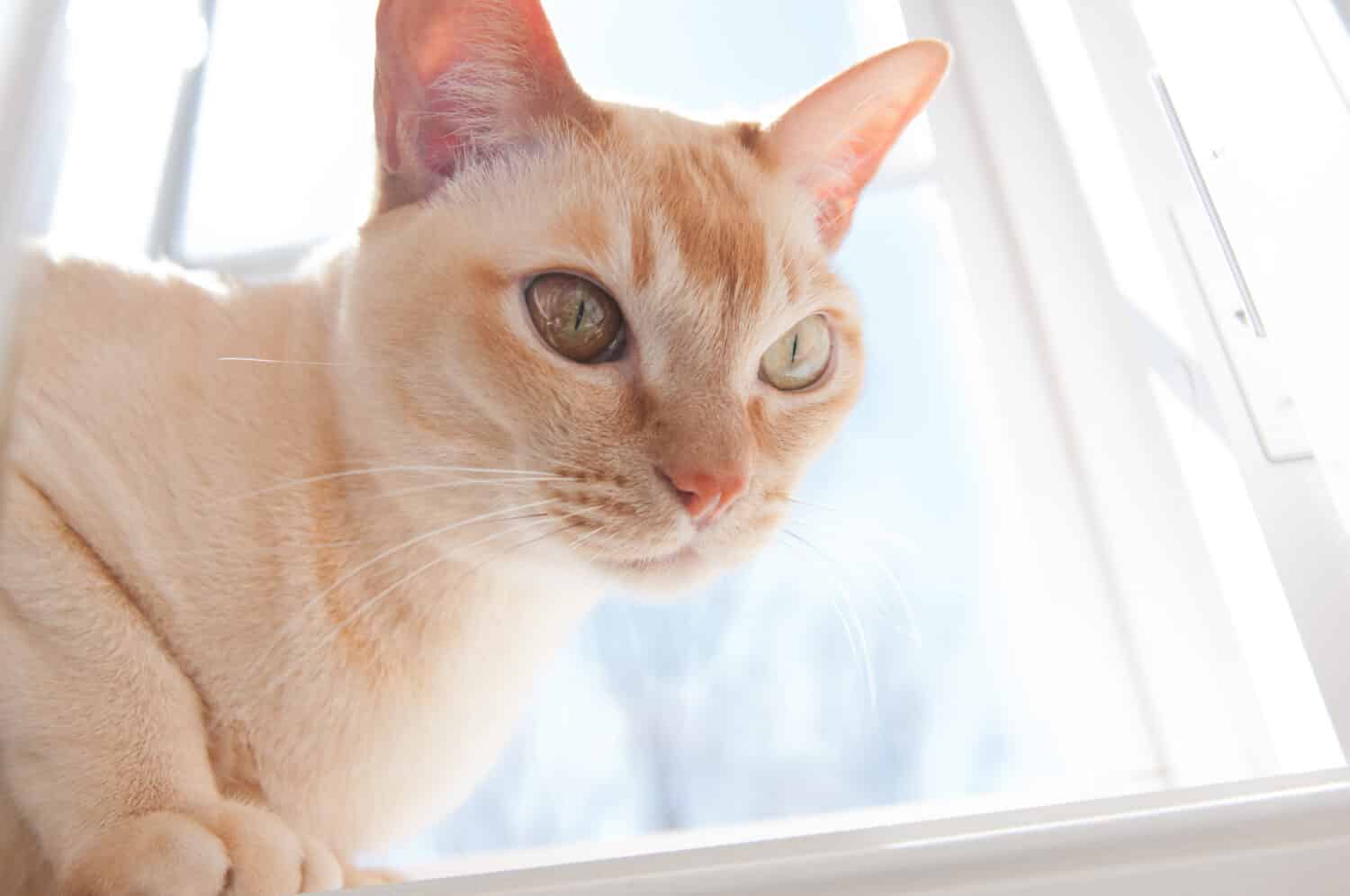
Red Burmese cats have a reddish-orange coat color.
©Lynne Bentley/Shutterstock.com
Lilac
Even more rare is the lilac coat color in Burmese cats. These cats look frosted. Their coats are gray and there’s a barely-there lavender tint that gives them a lilac look. This lavender color reaches both their nose and paw pads.
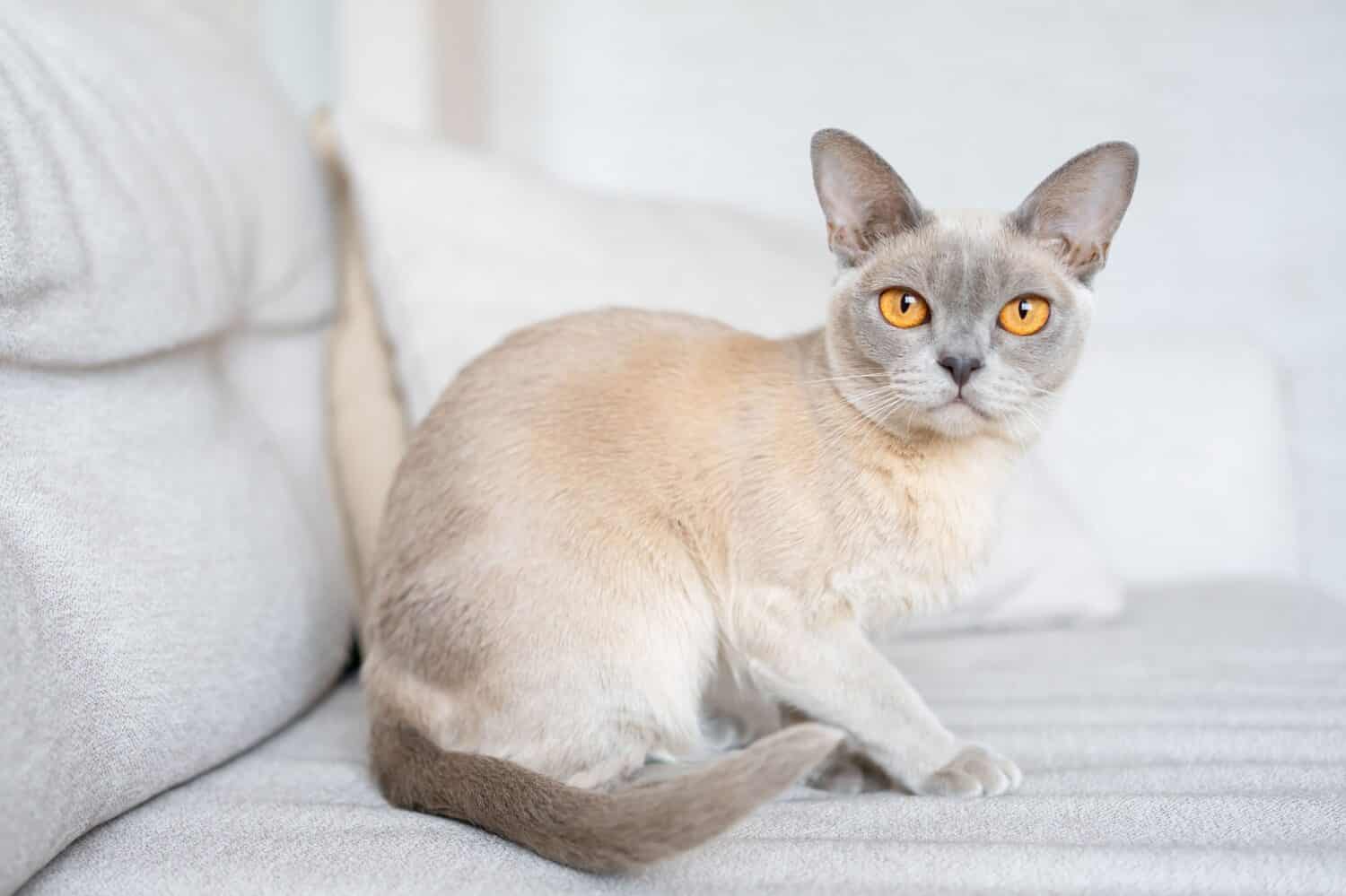
Lilac Burmese cats have a hint of lavender in their coats.
©Julija Sulkovska/Shutterstock.com
Platinum
Platinum Burmese cats are not as frosted as their lilac counterparts. Instead, they sport a lighter, paler, gray coat. Their undertone is light brown. Platinum is rarer than sable, champagne, and blue. Like blues, which is a more common color, platinum Burmese cats have a distinctive silvery sheen to them.
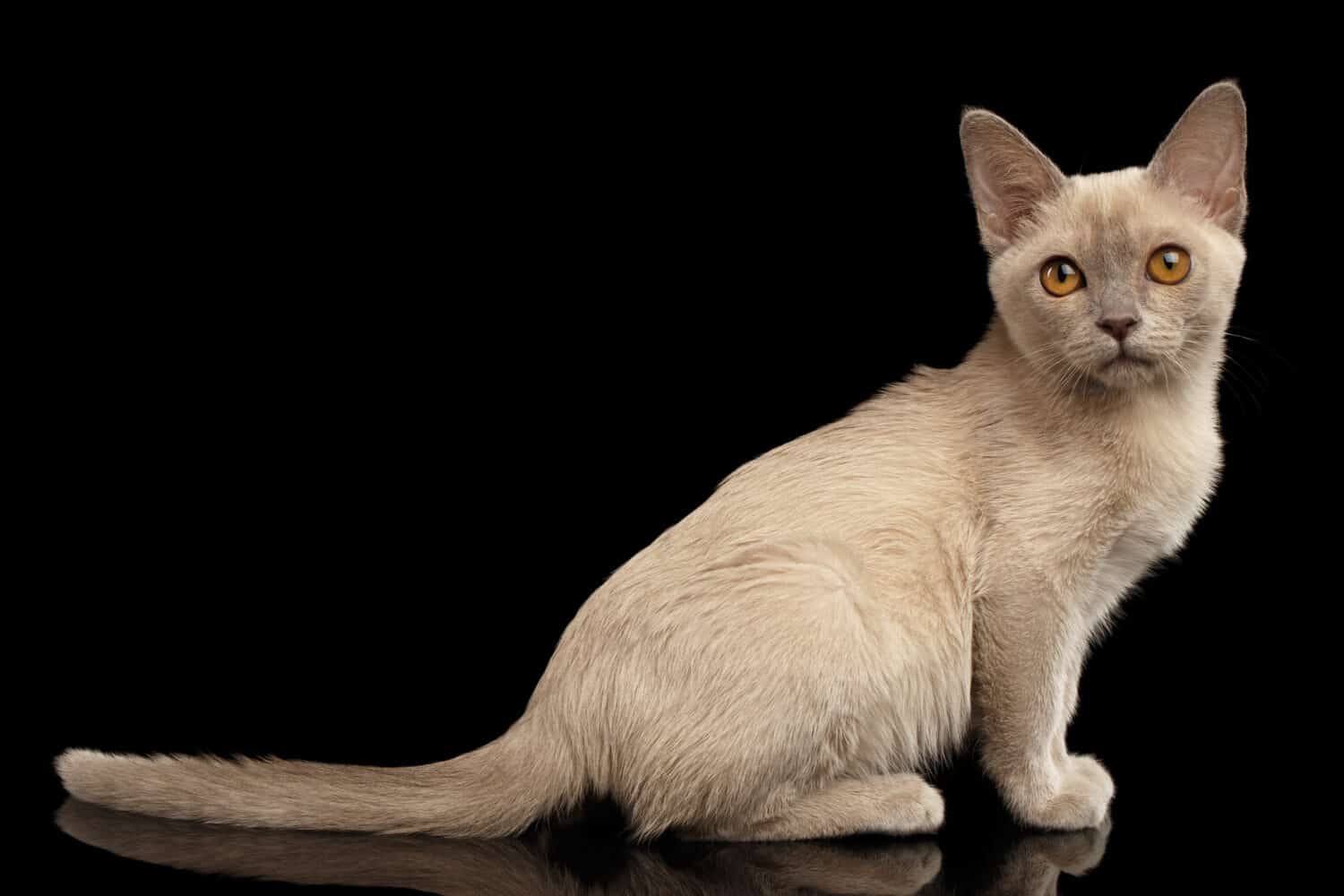
Platinum Burmese cats are more common than lilac, red, cream, and chocolate cats.
©Seregraff/Shutterstock.com
Blue
This is when we start getting into less common coat colors for Burmese cats. Blue is a popular hue for these cats but it’s less common than the other two below: sable and champagne. When blue, the cat has a bluish-gray coat. Their noses and paw pads are also the same color. When the light hits just right, these cats appear to have a metallic gleam.

Blue Burmese cats have matching blue noses and paw pads.
©Seregraff/Shutterstock.com
Champagne
The other most common color of a Burmese cat is champagne. These cats have a much lighter coat color that is more beige than brown, and the undertone is kind of pinkish. They have darker patches around their faces, ears, paws, and tails, giving them a distinctive contrasting look.
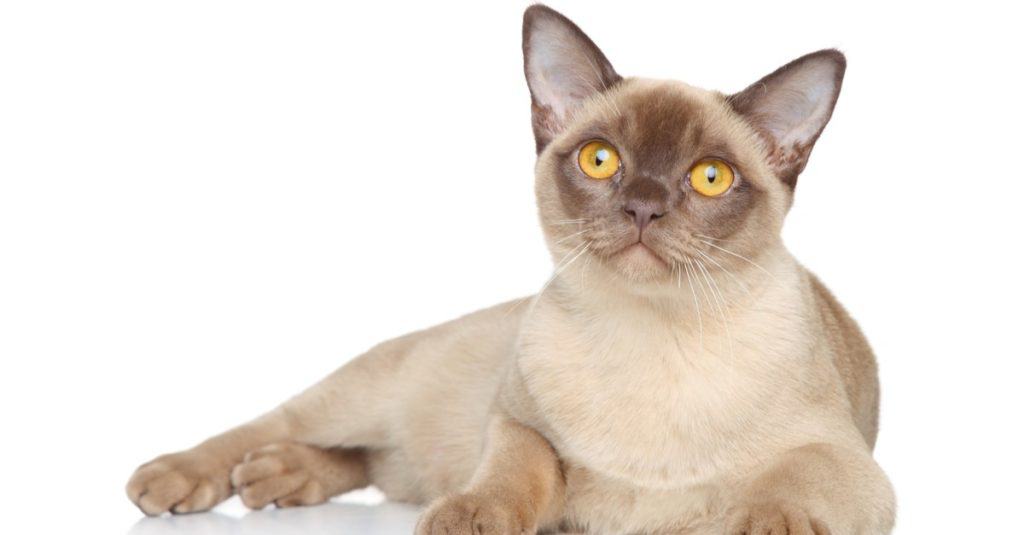
Champagne coat colors are common in Burmese cats.
©Jagodka/Shutterstock.com
Sable
The most common coat color of Burmese cats is sable, which is a dark brown color that’s complemented by a warmer undertone. This warmer tone is golden, which gives Burmese cats a beautiful ombré effect. These cats don’t have any other types of markings or shadings, and both their noses and paw pads are brown.
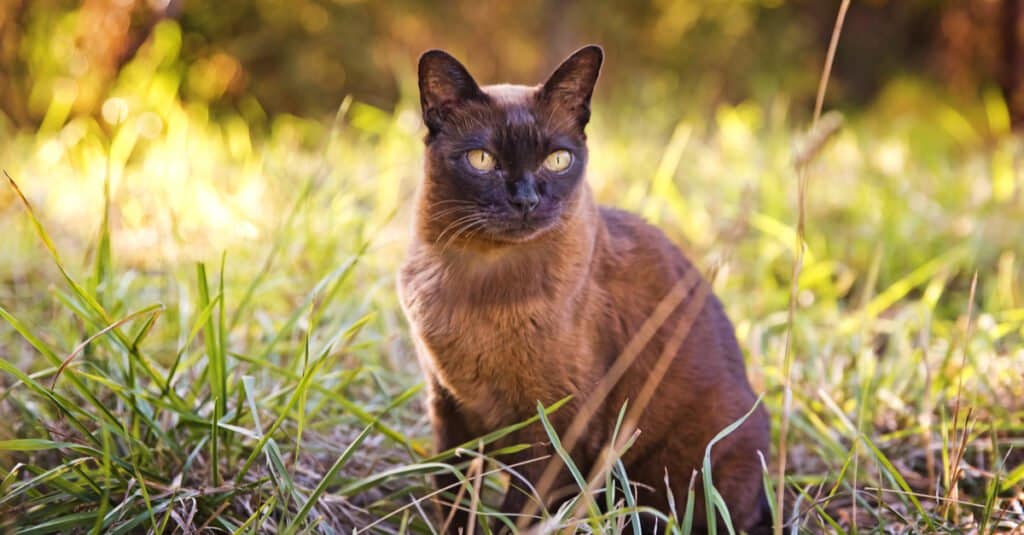
Burmese cats with sable coats are the most common.
©jojosmb/Shutterstock.com
Thank you for reading! Have some feedback for us? Contact the AZ Animals editorial team.







